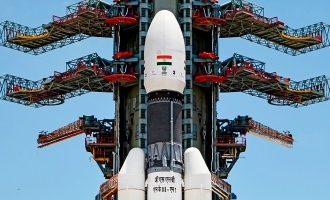Killer double asteroid posing risk to Earth scares NASA and ESA


Send us your feedback to audioarticles@vaarta.com



A double asteroid, which is located relatively close to Earth and classified as potentially hazardous, has been detected by space experts at NASA and ESA. This type of natural disaster is not very likely to happen, but would be catastrophic in the rare chance that it actually does, NASA said in 2018. In an effort to deflect it from a possible collision course, the space agencies have teamed up to launch a mission, whose goal is to find a way to deflect the smaller asteroid off its orbiting trajectory by crashing a spacecraft on it.
The main object of the double asteroid is called Didymos, while the smaller one is known as Didymoon. Didymos is about 2,540 feet (775 meters) wide, and Didymoon measures 540 feet (165 m) across. Astrophysicist Brian May said, "If we're going to find out if it's possible to deflect Didymos, it is going to be really, really hard. Aiming at a 160-meter-wide target across millions of kilometers of void, could we stop an asteroid hitting planet Earth? But we humans have the benefit of knowledge and science on our side." He depicted the twin asteroid set as follows - "Imagine a rock the size of a mountain with another rock the size of the great pyramid at Giza swinging around it. The Hera spacecraft is going to show us things we have never seen before."
 NASA's mission, known as Double Asteroid Redirection Test (DART), will supposedly bump the smaller of the two asteroids to monitor how much of its trajectory can be deflected, while ESA's Hera will figure out the results of the impact and calculate the entire mass of the asteroid. Hera will reportedly transport two CubeSats, which will help in learning about the aftermath of the DART impact. "The mission will revolutionize our understanding of asteroids and how to protect ourselves from them," the ESA mentioned in a statement about Hera.
NASA's mission, known as Double Asteroid Redirection Test (DART), will supposedly bump the smaller of the two asteroids to monitor how much of its trajectory can be deflected, while ESA's Hera will figure out the results of the impact and calculate the entire mass of the asteroid. Hera will reportedly transport two CubeSats, which will help in learning about the aftermath of the DART impact. "The mission will revolutionize our understanding of asteroids and how to protect ourselves from them," the ESA mentioned in a statement about Hera.
 Didymos is currently about 427 million kilometers away from Earth. DART's project manager Cheryl Reed said the mission's launch window has been slated to open in July 2021. "Current estimates suggest the spacecraft will carry a mass of 1,224 lbs (555 kgs) and will achieve a closing speed of 14,900 mph (24,000 km/h) before smashing into Didymoon in 2022. The spacecraft will use the "kinetic impactor" technique to strike Didymoon and change the asteroid's motion," she further added.
Didymos is currently about 427 million kilometers away from Earth. DART's project manager Cheryl Reed said the mission's launch window has been slated to open in July 2021. "Current estimates suggest the spacecraft will carry a mass of 1,224 lbs (555 kgs) and will achieve a closing speed of 14,900 mph (24,000 km/h) before smashing into Didymoon in 2022. The spacecraft will use the "kinetic impactor" technique to strike Didymoon and change the asteroid's motion," she further added.
Follow us on Google News and stay updated with the latest!
Comments
- logoutLogout

-

Anvika Priya
Contact at support@indiaglitz.com




 Follow
Follow
















































-a3e.jpg)
-3c4.jpg)
-e5c.jpg)
-e66.jpg)

-71b.jpg)








